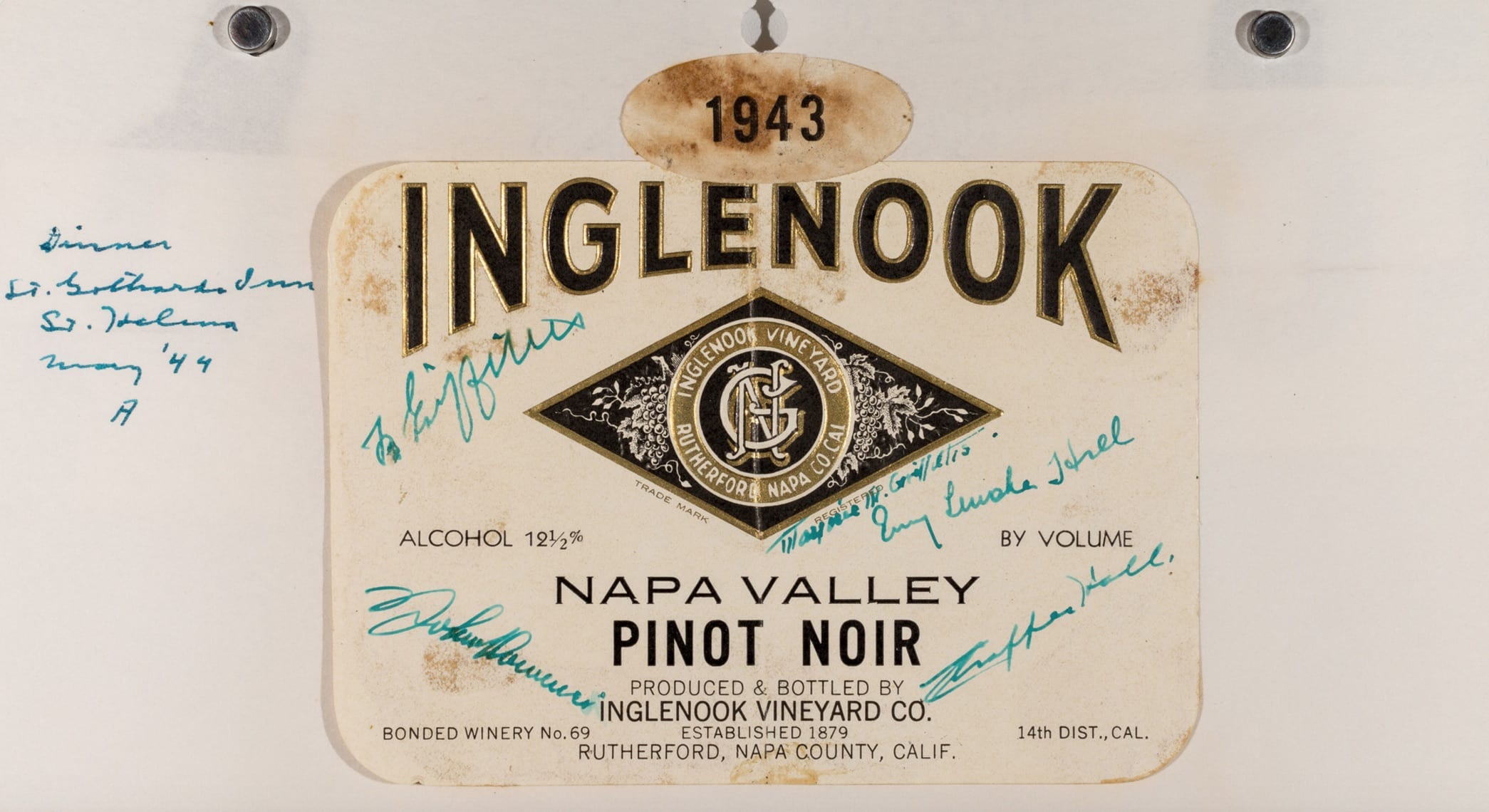Winter Break Hours and Services
Shields Library is closed through January 4, 2026. Digitization and interlibrary loan requests will be fulfilled after the library reopens on January 5.
A Toast on Amerine’s 105th Birthday: Great California Wines
October 30 marks the 105th birthday of our favorite wine label collector, Maynard Amerine, which got us thinking about what Amerine might have picked to toast himself on this special day. Luckily, he left us some clues in the form of the annotations on his label collection. Amerine was fond of noting when he drank a particular bottle and giving it a grade (those professorial habits die hard). He was quite fond of California wine and this batch of grade A students are all native to the state.
Image above: Amerine tasted this bottle of California red from Simi Winery in January 1942. Simi was founded when, in 1876, Tuscan natives Pietro and Giuseppe Simi began making wine in the North Beach area of San Francisco using grapes grown in Sonoma. In 1881, they expanded and purchased their own winery near Healdsburg and began planting their own vineyard. Simi was one of the few California wineries to survive Prohibition. Owners Fred and Isabelle Haugh continued to make wine and store it until sales were legal again.
This bottle was produced for the luxurious Hotel Del Monte in Monterey in 1935. The winery continued to sell high-end wine throughout the 20th century and went through several owners until it was acquired by Moët Hennessy in 1980 (which became LVMH Moët Hennessy). In 1999, LMVH sold the winery for approximately US$50 million to Canandaigua Brands, a division of Constellation Brands.
Side note: as UC Davis Professor Lapsley noted in Bottled Poetry: Napa Winemaking from Prohibition to the Modern Era, the Burgundy designation doesn’t refer to the French appellation but instead just indicated that imbibers could expect a heavier red wine.


Images above: Amerine was obviously fond of Inglenook’s wines. And with good reason: Founded in 1879 by Finnish Sea Captain Gustave Niebaum, Inglenook was one of the great pre-Prohibition wines. The winery was shut down during Prohibition, and after the Repeal, Niebaum’s widow reopened it. Soon, Inglenook was again making some of the best wine in the world. The 1934 bottle (made before Niebaum’s great-nephew, John Daniel, took over operations) marks one of the few instances that Amerine gave a wine an A+ (he was tough!) Francis Ford Coppola purchased the property in 1975, with profits from his classic film, “The Godfather,” and has spent the last 40 years working to reunite the property, the winery and the original vineyards.

Image above: Beaulieu Vineyard was established in 1900 by George de Latour and his wife Fernande. The name is derived from the French phrase, “Quel beau lieu” — “What a beautiful place!” Beaulieu survived Prohibition by obtaining a contract to supply sacramental wine to churches nationwide. It was a lucrative operation, and unlike many other California wineries, Beaulieu expanded during the period of Prohibition. Following the Repeal, legendary winemaker Andre Tchelistcheff was hired as winemaker and the quality of the wines greatly improved. Tchelistcheff became a mentor to some of Napa’s most influential winemakers including Mike Grgich (whose Chateau Montelena Chardonnay won the Judgment of Paris), Joe Heitz of Heitz Wine Cellars, and Robert Mondavi. Through a series of mergers and acquisitions, the winery is now owned by Diageo, a London company that is the world’s largest producer of beer and spirits.
Lucky for us, all three of these Amerine favorites are still producing excellent wines today. So raise a glass and toast the master who helped shape California’s wine industry today, in honor of what would have been his 105th birthday!